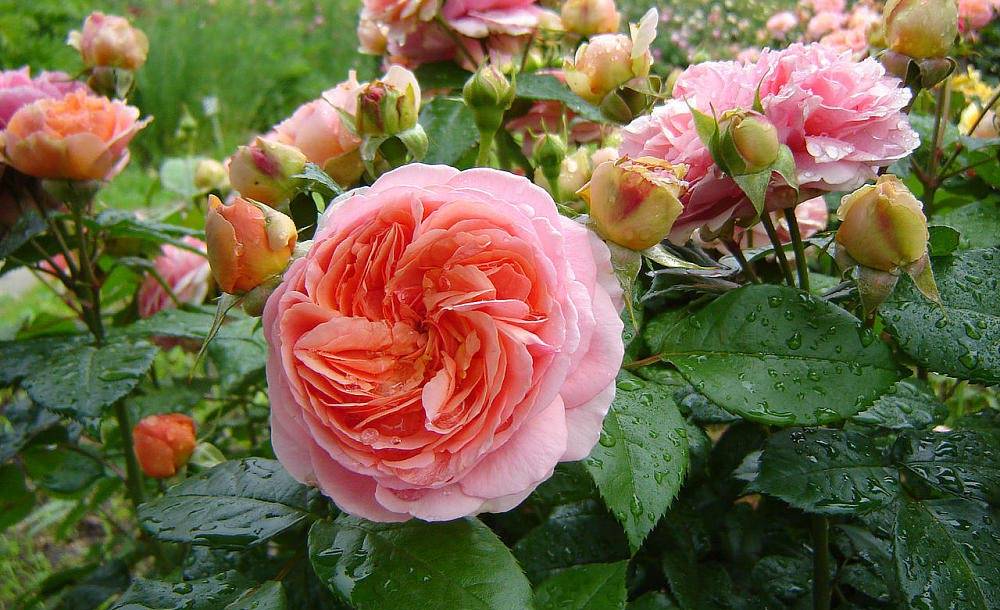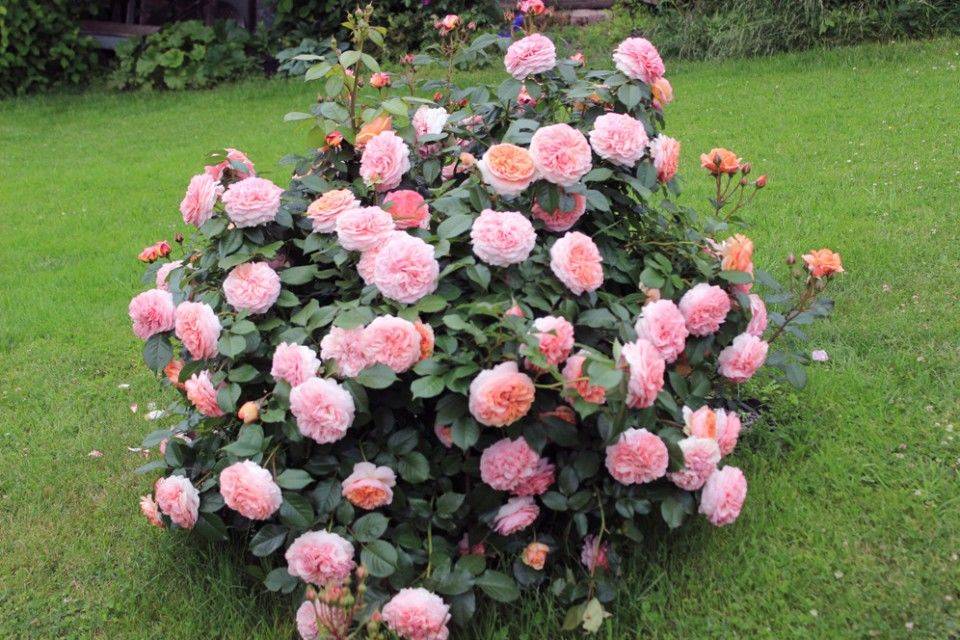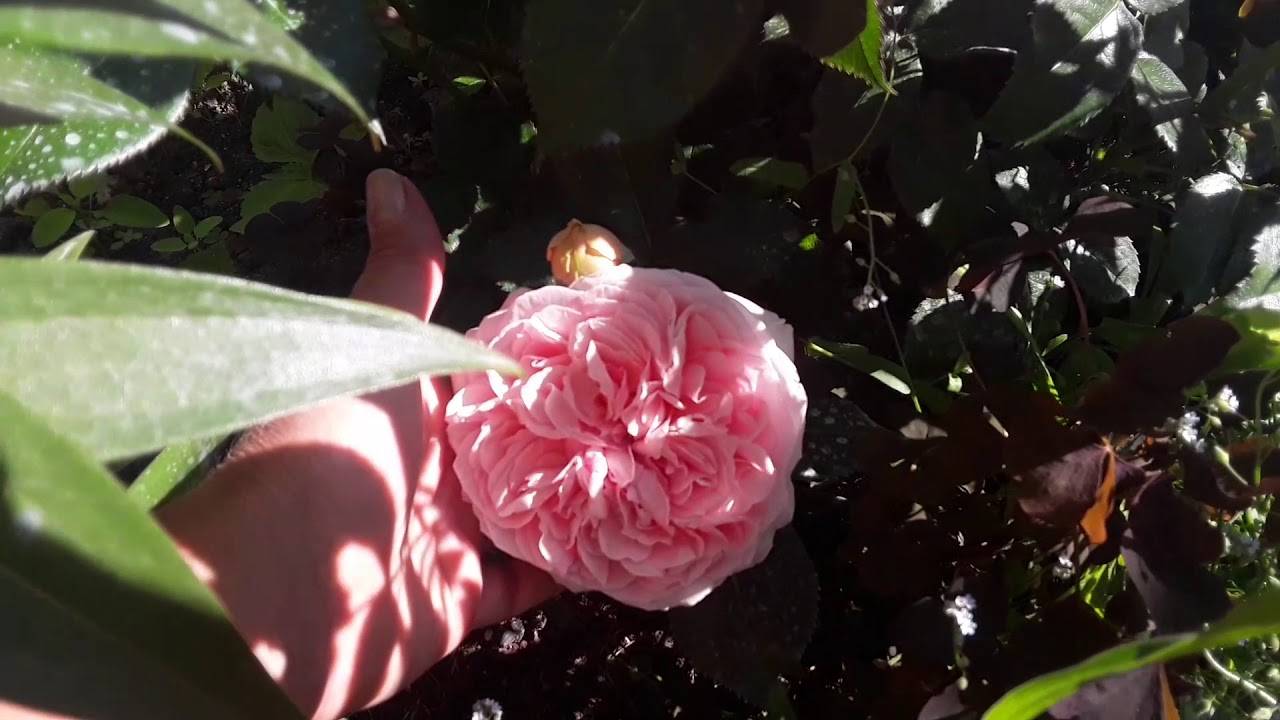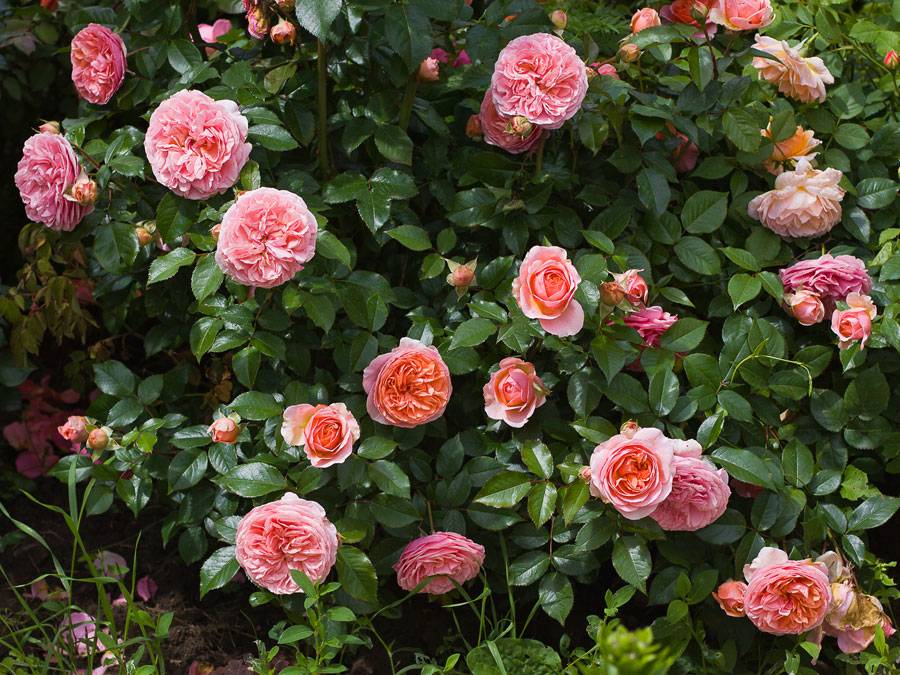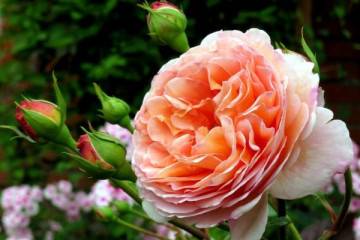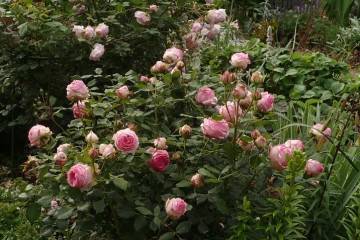Rose Chippendale - characteristics of varietal shrub
Content:
Rose Chippendale is very popular with gardeners, because it has excellent decorative characteristics and is unpretentious in growing. Before planting a plant, it is worth studying its features in order to provide it with quality care.
Rose Chippendale (Chip and Dale, Chippendale, Ali Man, Duchess of Cornwall, Music Hall, Tan97159) - what is this variety, history of creation
The plant was bred in 2005 by the German company Rosen Tantau and belongs to the hybrid tea varieties. In botanical descriptions, it is often called bush, climbing or park.
Sometimes the culture is referred to as the rose Chip and Dale. However, in reality, it got its name in honor of the furniture maker Thomas Chippendale. He decorated his products with patterns in the form of roses.
Brief description, characteristic
For a rose, Chippendale reaches 120 cm in height and 100 cm in width. It is characterized by powerful straight stems covered with many thorns. A well-groomed culture looks neat enough.
The rose is characterized by abundant flowering. The color of the flowers changes depending on the stage of flowering. The buds are warm pink in color and the petals turn orange as they bloom. There is also a variety of the Chippendale Gold culture with golden yellow buds.
Advantages and disadvantages of the variety
The key benefits of the plant include the following:
- spectacular appearance;
- sweet aroma;
- unpretentiousness to the growing area;
- propagation by cuttings and layering;
- the possibility of using in landscape compositions.
The main disadvantages are:
- burnout of flowers in the sun;
- many sharp thorns;
- the risk of developing diseases;
- insect threat.
Use in landscape design
Rose Chippendale is actively used to decorate areas. The culture is characterized by abundant flowering. It looks spectacular in solitary plantings and in hedges, so it is often used for zoning a site.
Growing a flower, how to plant it in open ground
Park rose Chippendale needs proper planting. This allows you to get a strong and viable plant.
In what form is the landing
It is best to grow the plant from seedlings. They can be purchased at specialized stores. It is important to pay attention to the quality of the planting material.
What time is the boarding
The culture should be planted in the ground in mid-May. Also, planting work can be carried out at the end of October.
Location selection
When growing a Chippendale scrub rose, it is worth choosing the right site. It is important to plant a crop in a sunny area. During the flowering period, temperature indicators should not be less than +15 degrees. Humidity parameters should be no more than 60%.
The soil must have neutral acidity parameters. An area with light soil is best. It must pass air and moisture well.
How to prepare the soil and flower for planting
Before planting, the seedling should be soaked for 1 day in water. Then the shoots should be cut off. The height of the bush should be 30 cm. Before planting, the roots should be sprinkled with ash.
On the site, it is necessary to prepare holes with a depth of 40 cm. This is done a week before planting. In this case, it is recommended to mix the excavated earth with humus.
Planting procedure step by step
To plant a Chip and Dale rose, you need to follow these steps:
- pour a little earth on the bottom of the recess to get a mound;
- place the seedling vertically;
- spread the roots;
- sprinkle with earth and tamp;
- water the plant;
- cover the soil around the seedling with a mulch layer.
Plant care
In order for a plant to develop normally, it needs high-quality care. It should include timely watering, fertilization, pruning.
Watering rules and humidity
A newly planted bush needs sufficient moisture. A mature plant should be watered once a week. 1 bush requires 10 liters of warm water. It is best to water the plantings in the evening.
The least amount of liquid is required in the fall. But before the onset of cold weather, the bush needs to be watered abundantly in order to charge it with moisture.
Top dressing and soil quality
In the first year, it is worth adding mullein or bird droppings. In the first case, the fertilizer is mixed with water in a ratio of 1: 6, in the second - 1:15.
After the first year, you need to feed the plants depending on the condition of the soil. It is recommended to use nitrogen fertilizers in spring, potash and phosphorus fertilizers in autumn.
Pruning and replanting
It is recommended to prune the bush in the fall - in October or November. This will help prepare the crop for winter. Also, the procedure can be carried out in the spring before the kidneys swell. It is generally recommended to cut the branches, leaving 5 mm above the developed bud. The cut should have a 45 degree angle.
Features of wintering a flower
Young plants do not have good winter hardiness, so they should be covered with spruce branches. Old bushes need insulation only in the most severe climatic conditions. At the stage of preparing the plant for winter, it needs to be fed. For this, phosphorus-potassium fertilizer is used.
Blooming rose
This culture is characterized by lush and abundant flowering. Rosebuds have a pleasant fruity aroma.
A period of activity and rest
The flowering of the plant is observed throughout the summer. It is more abundant in the second wave. With the onset of cold weather, the culture begins a period of rest.
Care during and after flowering
During the flowering period, the culture needs regular pruning. It is recommended to pinch long shoots by 10-15 cm. This accelerates the growth of weaker branches. To obtain large inflorescences, lateral shoots are cut at the initial stage of development.
What to do if it does not bloom, possible reasons
The lack of flowering can be due to the following factors:
- young or too old plant;
- wrong choice of landing site;
- violation of the rules for pruning;
- improper care;
- the appearance of root growth;
- bacterial burn.
Flower propagation
The rose can be propagated by layering and cuttings.Each of the methods has its own characteristics.
When is it produced
Cuttings should be harvested in the summer. For this, a shoot that has already bloomed is suitable.
Detailed description
Rose propagation methods:
- By cuttings. In this case, it is necessary to cut off the faded shoot and make cuttings 15-20 cm in size. The lower leaves should be removed and the plant should be buried in the prepared bed to a depth of 5-6 cm. Cover with foil on top. To speed up the emergence of roots, use Kornevin. Bushes can be planted in a permanent place for 3 years.
- Layers. In this case, you need to make a small groove near the bush and dig a powerful shoot into it. The crown should remain on the surface. In this case, the buried branch must be watered systematically. It will be possible to separate the plant next spring.
Diseases, pests and ways to control them
The rose can suffer from various insects - spider mites, aphids, sawfly. Insecticides help to cope with them - Aktara, Iskra, Commander.
Common diseases include rust, gray rot, peronosporosis. Bordeaux liquid helps to remove rust. With the development of rot, Fundazol should be used. Hom will help to remove the symptoms of peronosporosis.
Growing a Chippendale rose has a number of features. To achieve lush and abundant flowering, the culture must be watered, pruned and fed on time.
